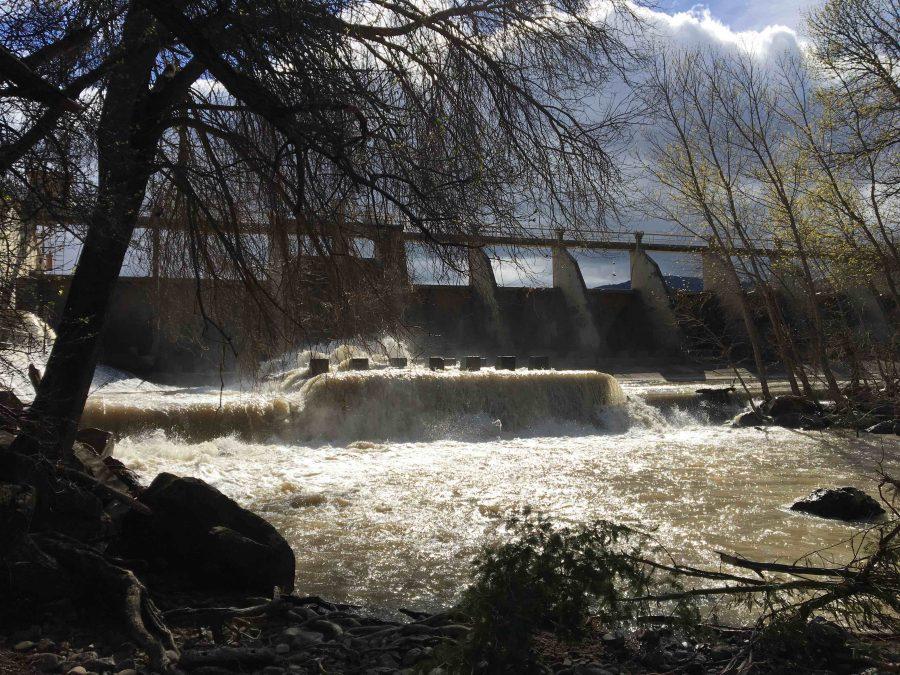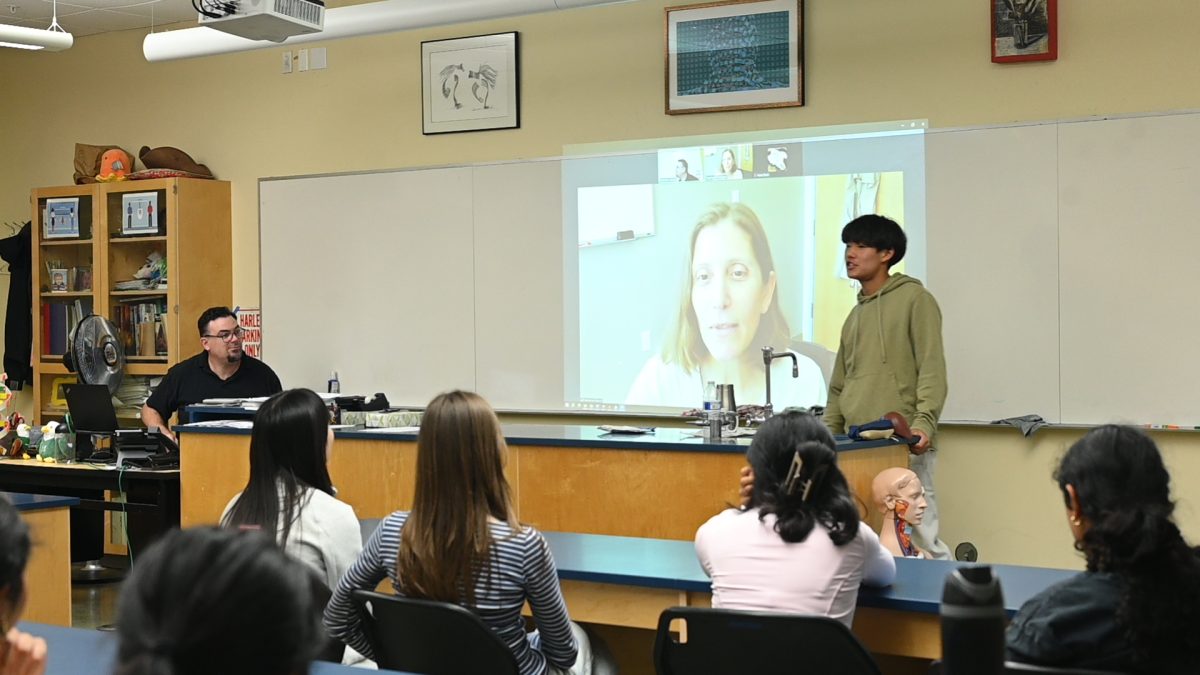The growing risk of climate refugees
Water cascades from an overflowing creek in Santa Clara, washing up on the surrounding banks during floods in March. The Bay Area experienced a high amount of rainfall and flooding in early March, with water levels reaching a high of 14.4 feet in San Jose.
November 16, 2017
Climate change has forced many in disaster prone areas such as Puerto Rico to leave their homes, causing the number of environmental refugees to grow.
An increasing number of climate refugees have been witnessed in countries stretching from South-east Asia, with its heavy monsoons, to Africa, with its large numbers of mudslides, to the Americas, with its devastating floods that forced many to rebuild their houses.
In the United States, a series of hurricanes that primarily affected Texas, Florida, and Puerto Rico threw residents into turmoil, causing them to initially struggle with finding basic living necessities. Some Puerto Ricans, hit by both Hurricane Irma and Hurricane Maria, have opted to leave their homeland for a safer place to live.
“I think ultimately people are going to stop living in those areas just because so much is going on, and they keep having to leave their home anyways,” Green Team co-president Anika Banga (12) said. “I think this is especially problematic because in certain areas, people who live there don’t have the means of moving away, so they will be forced to live in horrible conditions.”
In the case of Asia, heavy monsoon rains and flooding in Bangladesh, India, and Pakistan caused deaths of over a thousand people. In addition, in the relatively low-lying parts of Nepal, intense flooding damaged over 80,000 homes.
In addition to the immediate struggle of finding food, water and shelter, some Nepalese people have migrated to neighboring Tibet to avoid similar disasters in the future.
As global sea levels rise, the frequency of similar catastrophic events are predicted to increase. As a result, people in exposed areas may need to start migrating to other countries.
“I think once disaster hits and people lose their homes, there are probably many of them that are being forced to look for residences elsewhere,” Green Team adviser Diana Moss said. “[In the future] you’d like to believe that people in those areas would be resettled, and they would chose to live in other areas.”
However, destructive natural disasters are occurring more frequently each year; in 2001, there were around 450 natural disasters while in 2016 there were 750. Larger amounts of people will be forced out of their homes, possibly causing a refugee crisis in which some countries will receive sudden influxes of immigrants due these natural disasters.


















![“[Building nerf blasters] became this outlet of creativity for me that hasn't been matched by anything else. The process [of] making a build complete to your desire is such a painstakingly difficult process, but I've had to learn from [the skills needed from] soldering to proper painting. There's so many different options for everything, if you think about it, it exists. The best part is [that] if it doesn't exist, you can build it yourself," Ishaan Parate said.](https://harkeraquila.com/wp-content/uploads/2022/08/DSC_8149-900x604.jpg)




![“When I came into high school, I was ready to be a follower. But DECA was a game changer for me. It helped me overcome my fear of public speaking, and it's played such a major role in who I've become today. To be able to successfully lead a chapter of 150 students, an officer team and be one of the upperclassmen I once really admired is something I'm [really] proud of,” Anvitha Tummala ('21) said.](https://harkeraquila.com/wp-content/uploads/2021/07/Screen-Shot-2021-07-25-at-9.50.05-AM-900x594.png)







![“I think getting up in the morning and having a sense of purpose [is exciting]. I think without a certain amount of drive, life is kind of obsolete and mundane, and I think having that every single day is what makes each day unique and kind of makes life exciting,” Neymika Jain (12) said.](https://harkeraquila.com/wp-content/uploads/2017/06/Screen-Shot-2017-06-03-at-4.54.16-PM.png)








![“My slogan is ‘slow feet, don’t eat, and I’m hungry.’ You need to run fast to get where you are–you aren't going to get those championships if you aren't fast,” Angel Cervantes (12) said. “I want to do well in school on my tests and in track and win championships for my team. I live by that, [and] I can do that anywhere: in the classroom or on the field.”](https://harkeraquila.com/wp-content/uploads/2018/06/DSC5146-900x601.jpg)
![“[Volleyball has] taught me how to fall correctly, and another thing it taught is that you don’t have to be the best at something to be good at it. If you just hit the ball in a smart way, then it still scores points and you’re good at it. You could be a background player and still make a much bigger impact on the team than you would think,” Anya Gert (’20) said.](https://harkeraquila.com/wp-content/uploads/2020/06/AnnaGert_JinTuan_HoHPhotoEdited-600x900.jpeg)

![“I'm not nearly there yet, but [my confidence has] definitely been getting better since I was pretty shy and timid coming into Harker my freshman year. I know that there's a lot of people that are really confident in what they do, and I really admire them. Everyone's so driven and that has really pushed me to kind of try to find my own place in high school and be more confident,” Alyssa Huang (’20) said.](https://harkeraquila.com/wp-content/uploads/2020/06/AlyssaHuang_EmilyChen_HoHPhoto-900x749.jpeg)






![LALC Vice President of External Affairs Raeanne Li (11) explains the International Phonetic Alphabet to attendees. "We decided to have more fun topics this year instead of just talking about the same things every year so our older members can also [enjoy],” Raeanne said.](https://harkeraquila.com/wp-content/uploads/2025/10/DSC_4627-1200x795.jpg)




